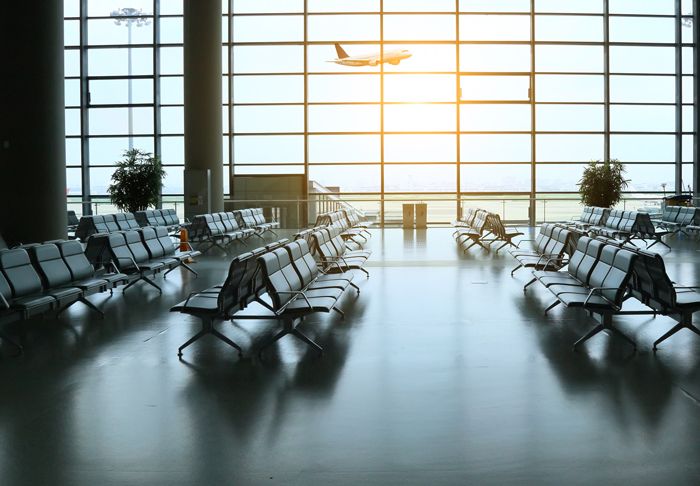Blog
International Travel: Business Travel and Accident (BTA) Insurance Protects Employers
Business travel accident (BTA) insurance plans are staples in corporate portfolios, minimizing travel risk and protecting employees with medical coverage. However, as business travel plummets, the need for new BTA plans declined and put incumbent plans at risk for renewal. As a result, some employers terminated or did not renew their BTA plans, repurposing the cost of these plans to other needs.

Now is the time for companies to assess how they will protect employees as they face new travel risks and overcome gaps in traditional BTA plans.
Business travel losses have been staggering, resulting in a 79% decline in North America travel from April to December of 2020.
The Good News is That 2021 is Showing a Robust Rebound
| Jan. 1 - Dec. 31 2020 | Apr. 1 - Dec. 31 2020 | |
|---|---|---|
| North America | -60% | -79% |
| Western Europe | -58% | -77% |
| Latin America | -45% | -59% |
| Eastern Europe | -50% | -63% |
| Asia Pacific | -44% | -52% |
| Middle East and Africa (MEA) | -39% | -52 |
Source: Global Business Travel Association
BTA Critical Coverage
Elements Employers are ramping up their due diligence efforts to protect their employees. Whether in the workplace or during business travel, companies remain focused on protecting their employees' health, safety, and welfare.
| Companies are finding increasing complexities associated with both domestic and international trips. Living in a new era of travel requires employers to address the following risk factors: |
|---|
| Security: Political unrest and natural disaster exposures |
| Out-of-Country (OOC) coverage: Medical riders and accident assistance for travel to/within foreign countries |
| In-Country: Medical and accident coverage for domestic travel |
Where there is peak interest is whether policy limits are sufficient to address potential increased exposures. For example, robust BTA programs cover incidents of COVID 19 virus, which realistically has not changed and still protects employees who contract the virus. However, employers must address gaps where there may be inadequate coverage, especially for employees who travel to foreign countries.
One area of recent interest is whether COVID-19 testing is a covered expense by OOC Medical riders. Our experience suggests that this is not the case, such riders are specific to urgent and emergency illnesses or accidents, not intended to support tests prior to or after business travel. Additionally, the OOC medical coverage only applies once the insured has left their home country. The expectation is that covid testing to certainly be an eligible expense for home country programs or other primary medical plans. Of course, each situation may be different, and each claim should be evaluated by the carrier based on specific circumstances and policy language.
New Considerations for BTA Coverage
BTA policies provide vital protection for an active, multinational workforce. As companies reconfigure how and where their workforce performs their jobs, they must also consider their eligibility for BTA coverage.
| Defining where an employee works can have a significant impact on a BTA policy. Employers must consider: |
|---|
| Where is the place of employment? |
| Is a home office a place of employment or part of a business trip? |
| How many permanent and temporary locations does the business have? |
| Is remote work covered? |
| Does the definition of “remote” work include permanent, working out-of-state, and international locations? |
| Do employees commute, which would exclude them from BTA plans? |
In addition to the place of employment, companies must also identify coverage gaps. Of primary concern are OOC medical limits, which are typically capped at $100,000. However, given the COVID-19 virus spread, medical costs will quickly deplete that limit. Consideration of larger limits like $250,000 or $500,000 may be more appropriate.
Finally, corporations may consider the need for travel tracking apps to verify the location and whereabouts of employees. These apps are becoming more popular but do have a policy and legal ramifications to consider.
Developing a Global Standard for Mitigating Travel Accident Exposures
Companies are taking a closer look at corporate travel accident exposures. As uncertainty increases, it is time to migrate to a new paradigm that protects both employers and employees.
| Risk assessment, mitigation, employee procedures, and crisis response are now needed in addition to dependable medical assistance. |
Employers can do their part to protect employees by establishing clear guidelines for travel, including pre-trip approval and assessment of travel risk. Scheduling trips through a single travel channel as well as providing information to employees on what to do in a crisis is also helpful, according to Direct Travel. Companies can also use a single travel carrier to arrange travel and provide employee assistance wherever they travel.
BTA carriers can ensure a consistent solution, provide a single point of contact, and offer a full range of business travel insurance coverage and assistance services. In addition, a comprehensive BTA benefit will complement an employer’s primary medical and worker compensation programs, including foreign medical assistance, medical evacuation, and repatriation of remains provisions.
BTAs are Now Creative and Flexible
Standard BTA policies are becoming more flexible and creative, adapting to new scenarios that would not typically come to mind. As business travel increases on domestic and international fronts, assessing new risks and protecting employees have never been more critical.
As we adapt to new post-pandemic environments, Woodruff Sawyer works closely with clients and carriers to understand their risks and get the most from their BTA policies. For more information, reach out to us or subscribe to the Woodruff Sawyer newsletter to get expert insights into benefits, risk, and current trends.
Author
Table of Contents










